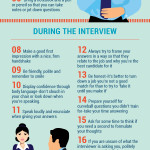If you’ve always been interested in the medical field but aren’t interested in becoming a doctor or nurse, there are other paths you can take. While these do require advanced education, they don’t need years of schooling and mountains of student loan debt. Consider these medical careers if you would like to spend less time in school and more time helping people.
Medical Scribing
In years past, hand-written notes by the doctor were later transcribed. The introduction of computers and tablets in physicians’ offices was a great innovation but led to a new problem. Doctors don’t have the time or inclination it takes to update the patient records of their patients constantly. Rather than do it themselves, many doctors now rely on medical scribes who make their rounds with them and quickly and efficiently update patient records.
Medical scribing requires training in several areas, including medical terminology, electronic medical records (EMR), and HIPAA regulations. Clinical training covers professional conduct, working in a medical environment, time management, and more. Some medical scribing companies, such as Provider’s Choice Scribe Services, provide complete training for their scribes and help them find employment. Doctors’ offices and hospitals can either use a medical scribe from an agency or directly hire a scribe on their own.
Specialties within medical scribing include neurology, general practice, cardiology, pediatrics, oncology, orthopedics, pediatrics, plastic surgery, gynecology, behavioral health, and more. If you want to work in a particular area, such as pediatrics, you can focus on that area and easily find work after training. In most cases, you will need a high school education and about six months of education and training specifically focusing on medical scribing knowledge and duties.
Phlebotomist
Phlebotomy jobs have been around longer than medical scribing and are always in demand. You can work in a physician’s office, medical laboratory, hospital, or clinic. Phlebotomists draw blood for a variety of tests, usually in a lab setting. Some phlebotomists work exclusively in hospitals or specific doctors’ offices, while others may work different days at different facilities. Some work for blood banks and may coordinate and work blood drives during periods when blood supplies are low or there is an emergency.
You have to be certified to be a phlebotomist, which involves passing a rigorous exam and the ability to draw blood safely and comfortably from patients. The training to become a phlebotomist can take anywhere from a few months to a year, depending on the program. You will need to follow strict health and safety protocols and be comfortable with needles and handling blood products.
If you have a high school degree and want to enter a medical career without years of study, medical scribing or phlebotomy both offer the opportunity to work closely with both doctors and patients. The proper training program, compassion for others, and attention to detail are what it takes for success in these professions.








